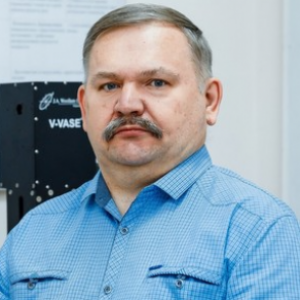Specialists from the SB RAS Budker Institute of Nuclear Physics have been named laureates of the Yu.I. Ostrovsky Prize – an annual competition for the best scientific works in the field of optical holography and interferometry.
The research group, which includes physicists from Budker Institute of Nuclear Physics, Samara University, and the Scientific Center for Laser Materials and Technologies of the A.M. Prokhorov General Physics Institute RAS (GPI RAS), has been awarded for a series of works dedicated to studying vortex Bessel beams of terahertz radiation for advancing telecommunication technologies.
Bessel beams are named as such because their transverse intensity distribution is described by a Bessel function. Generating Bessel beams and studying their properties is a promising field in physical optics. Terahertz radiation can be "packaged" into these Bessel beams, also known as optical vortices, and used for high-speed data transmission in sixth-generation (6G) multi-channel communication systems.
To thoroughly study the properties of Bessel beams, they require high power – currently, such beams can only be generated at the Novosibirsk Free Electron Laser (NovoFEL) – a unique source of terahertz radiation with no equivalents worldwide.
The Novosibirsk Free Electron Laser is a source of powerful terahertz and infrared radiation, unparalleled not only in Russia but globally. Its average power is several times higher than other existing sources worldwide, enabling unique experiments across a very broad wavelength range (from 8 to 403 micrometers), including those aimed at developing the foundation for transitioning to the terahertz range in telecommunications.
Furthermore, optical vortices can be multiplexed. This means multiple beams (modes) with unique transverse distributions – up to hundreds or more, each carrying its own signal – can be transmitted on a single frequency within a single spatial channel. This significantly increases data transmission speed and volume.
Vortex beams are actively researched worldwide, and Bessel beams have been generated in practically all wavelength ranges: visible, infrared, and X-ray. However, the terahertz range remains understudied for the simple reason that while equipment (radiation sources, detectors, optics) for the visible and radio ranges has long existed and is well-developed, the terahertz range presents far greater challenges. The exception is the Novosibirsk Free Electron Laser – a source of terahertz and infrared radiation whose average power significantly exceeds that of other existing global sources.
Special terahertz-range diffractive optical elements play a crucial role in this research. Without them, it would be impossible to control the transverse structure of monochromatic radiation from a powerful laser and, consequently, form vortex beams. Since 2010, the Department of Nanoengineering at Samara University has been creating optical elements for conducting experiments on NovoFEL at SB RAS Budker Institute of Nuclear Physics. Research on creating diffractive optical elements for forming beams in the visible and infrared ranges with specified transverse structures, including vortex beams, is conducted at the university under the guidance of RAS Academician Viktor Soifer. Mastering the terahertz range has stimulated efforts to transfer this accumulated expertise to this new spectral domain.
"The interest in researching terahertz vortex beams is linked to the prospects of utilizing their remarkable properties in creating terahertz multi-channel telecommunication systems and remote sensing systems," commented Vladimir Pavelyev, Head of the Department of Nanoengineering at Samara University, Doctor of Physical and Mathematical Sciences. "Within the framework of joint work with SB RAS Budker Institute of Nuclear Physics, using microlithography technologies, we produced silicon diffractive optical elements for the terahertz range, designed to form beams with a specified transverse amplitude-phase distribution, particularly vortices. Here I would like to acknowledge the significant contribution of our technologists Tukmakov and Reshetnikov. Regarding the specifics of terahertz diffractive optics – the long wavelength of the radiation allows the fabrication of subwavelength structures that are difficult, if not impossible, to realize for the visible or infrared range. As a result, we fabricated, for instance, metasurfaces for forming Bessel beams with specified transverse polarization states, which expands the possibilities for solving telecommunications tasks."
Reference:
The Yu.I. Ostrovsky Prize has been awarded annually since 1997 for the best scientific works in the field of holography and interferometry, carried out in Russia and CIS countries and published in domestic and international journals.
 RU
RU  EN
EN  CN
CN  ES
ES 